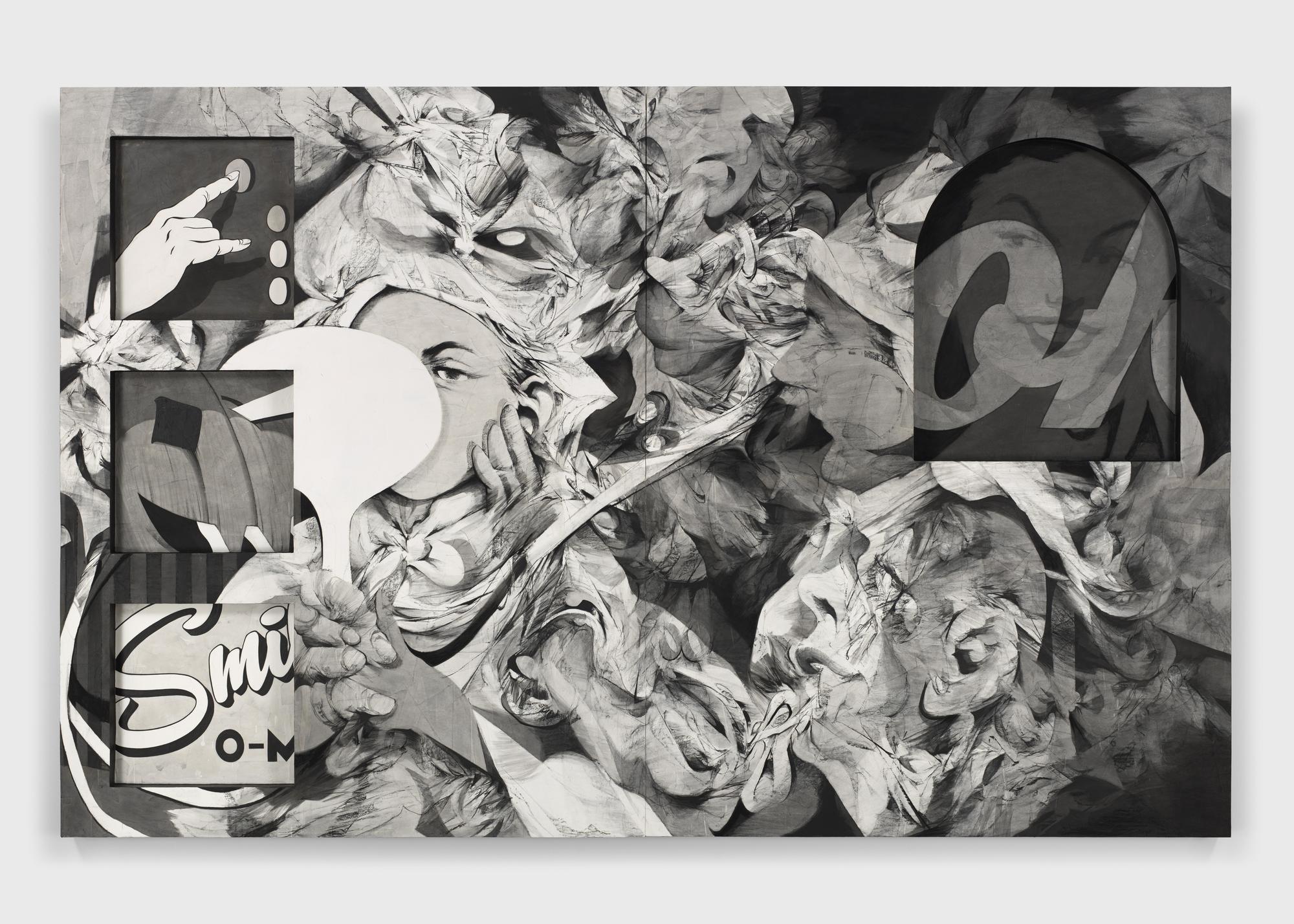There’s no escape, I can’t wait
I need a hit, baby, give me it
You’re dangerous, I’m loving it
Britney Spears, Toxic
I want to be a good girl. I write this sentence shamefully. But before this sentence, I sought to blame You, because I only want to be seen not heard, and my Daddy no longer recognises me as my attention span is sho(r)t and I am told that: for a moment falling feels like flying. It’s not my fault, I am perfect and pristine, and You have always judged me more harshly than my Brother. If I drop out will the cloud catch my fall?[1] If I text You directly will I cut through the incessant noise? Or will my body and words continue to fragment in a perpetual slippage away from Meaning and Signification?[2] Or perhaps, if I stop speaking to women altogether, will my communication be Better than Ever?[3]
Over-exposed and self-aware as if our hearts and minds are encased in an all-encompassing façade, the drawings of Anna Park speak in this language of fixated Young-Girl lostness, foundness and inbetweeness.[4] They speak to us directly; that is, frontally. Frontally in the form of juxtaposing images, placed side-by-side in the American comic tradition, seeking to trigger a reaction with simplified, idealised bodies. Frontally in the photographic tradition of Walker Evans seeking containment within the billboard bounds of the picture frame. Frontally in the style of Pop artists seeking to ‘face the now, the present, the today with pleasure and acceptance’[5] Sure, some have interpreted this style of compressed frontal compositions ‘as a defence against easy answers’.[6] I prefer to see it as a slow suffocation of polite society. It’s a guise of ambiguity, as opposed to mere objectivity, in which Park creates a subversive space for poor choices, bad behaviour and total failure.
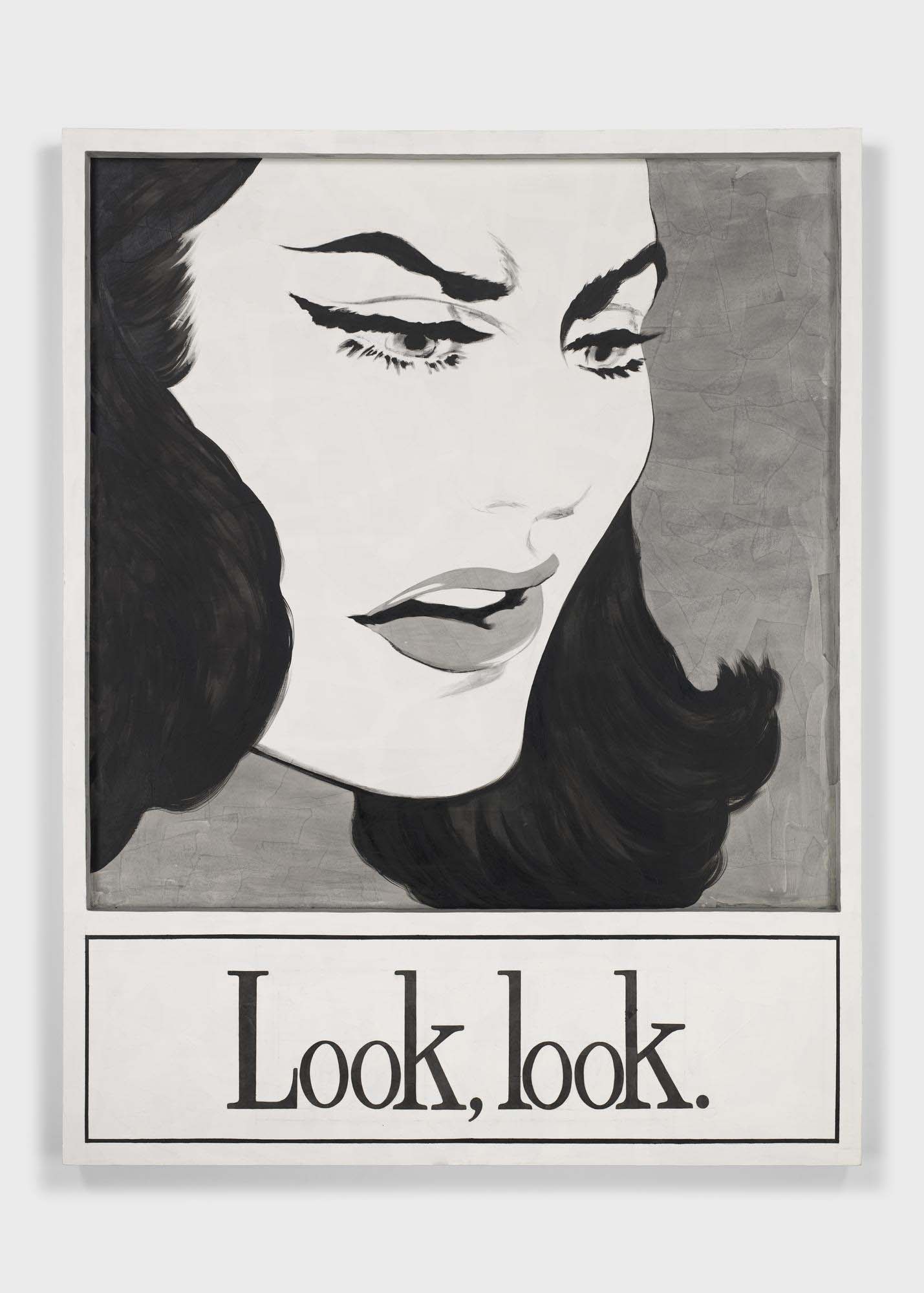
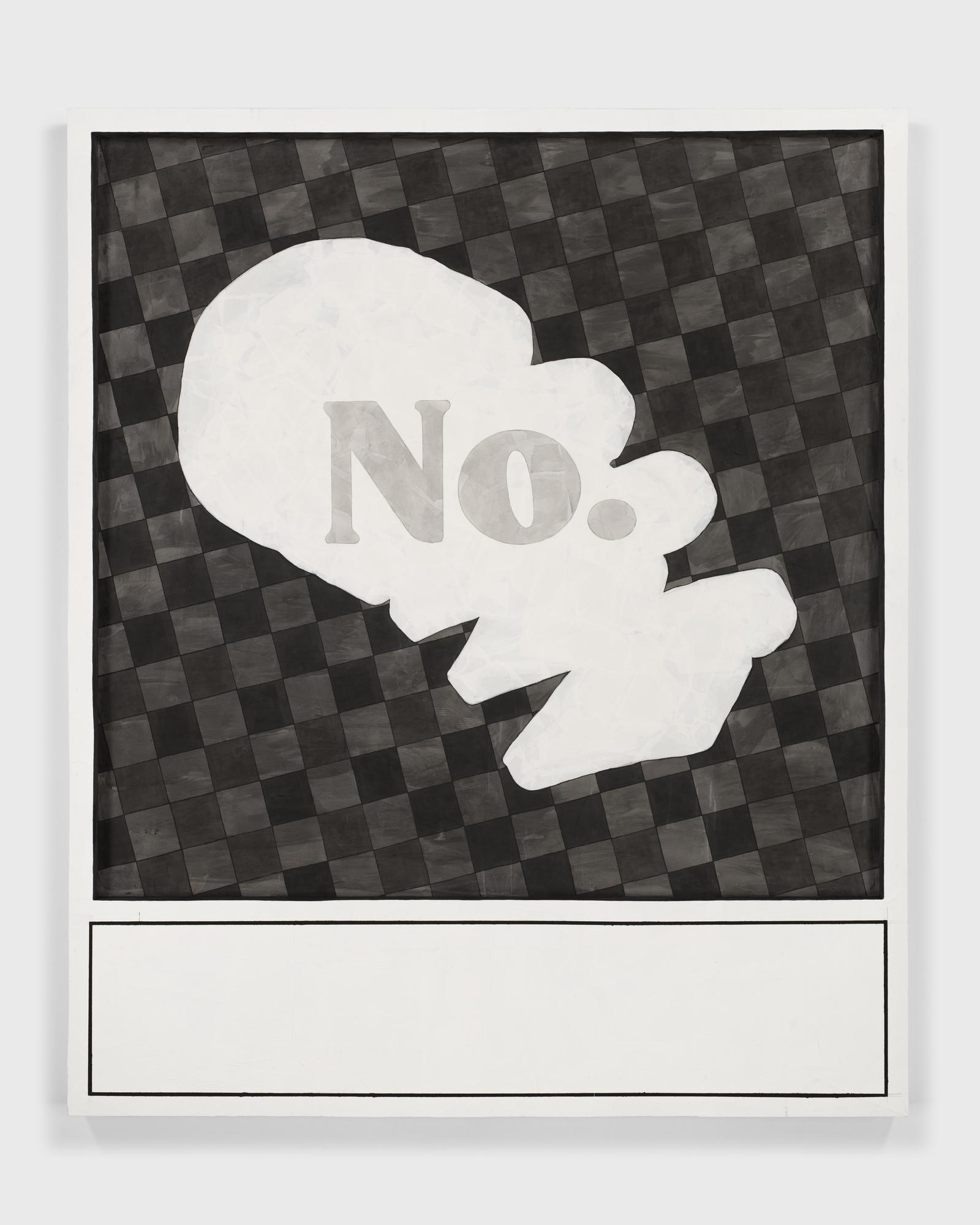
Believe, in beauty!
Having immigrated from South Korea to the United States as a child, Park’s earliest experiences of Western culture were shaped by the female characters depicted in current and past American screen stories and advertisements. For Park, being inundated with these female archetypes during her formative years in Salt Lake City, Utah, shaped her sense of identity and femininity:
What I aspired to be was built from the way women are presented in mass media. Filtered images of women in advertisements and on screen who were always depicted as nothing more than ‘perfect’. They were rarely created to be multidimensional beings. I see the female figures I present in these works as a vessel of my own self. Women who reflect a certain “ideal” yet are placed within an environment consumed by chaos that disregards her own comfort.
Understanding that her archive of images is as much a part of her lived environment as it is ours, Park uses these archetypal women to tap into our collective conscious. In this manner, Park’s female dominated compositions are an assemblage of selves that have been shaped by diverse textual sources, especially mid-20th century American advertisements, comics, film and television. Take for example the pin-up girl that emerged in the 1950s as a symbol of modern American life, and who appears in many of Park’s drawings. Notably popularised by Hugh Hefner’s Playboy magazine, this figure became intertwined with male fantasies of the all-American girl and a cornerstone of the American dream. Pop artists such as Marjorie Strider used the pin-up girl to acknowledge this fantasy while actively dispelling; physically extending these flattened female bodies into three-dimensional ‘consumer’ space through carved wood and foam projections. Roy Lichtenstein also critiqued such false ideals in his ‘Love Comic’ paintings by subtly undermining the source material, as seen in Drowning Girl, 1963, where women are depicted as foolish heroines whose thoughts and actions lead to their own downfall. But Park’s smiling women are not the distraught, painfully white young beauties from which she sources them. In her drawings she recasts them as strong female leads who might exude the confidence of Kylie Jenner or the tough charisma of Tura Satana. Mysterious and irreducible they evoke an attitude of ‘Don’t mess with me’ but also ‘Please see me and love me’.
Identities are complex constructions but our engagement with such representations is often primarily gesticular, such that the experience of a specific identity is flattened. Amid this disorder of external influences, Park’s drawings highlight the enduring awareness of our bodies and insecurities as problems, possibilities and platforms. Making visible the ongoing societal pressure to conform to gender norms that stretch across race, sexuality and class, they ask: Who is the ‘ideal woman’ and how are we required to perform our selves in such worlds? As Park begins to unravel this cultural construction the swirling mass of stylised figures become vessels for the artist’s introspection. Her drawings are thereby always self-reflexive and outward-looking; they register herself as they gesture away from and beyond themselves to depict the vulnerability and psychological tension simmering beneath the surface of everyday social interactions. This observational quality permeates Park’s practice as she draws from her position as an “outsider” looking in on the emotional complexity of the human subject.
Further to this, by bringing her childhood experiences in suburban Utah into disjointed dialogue with the language of mass media, Park makes use of Pop art’s recognition that ‘the media imagery of mainstream capitalist culture, from advertising to comics to movies, had become, the stuff of their consciousness’, and the ways in which we could re-route such material for our own purposes.[7] Like Lichtenstein, who used media imagery to negotiate the complexities of his professional and personal life, popular culture is Park’s method and her primary subject is herself.
By embedding herself and such existential questions within an old network of images, Park states that the new network of images coursing through our bodies remains bound to that universal ache for recognition and validation. If these well-worn images of the all-American girl are not only a thing of the past, but also a myth (for she never really existed in the first place), then what are we supposed to do with them, and what are we supposed to do with ourselves? Can these images of the past help us to negotiate the present?
I have a multitude of open tabs in my web browser, each one is searching for You.
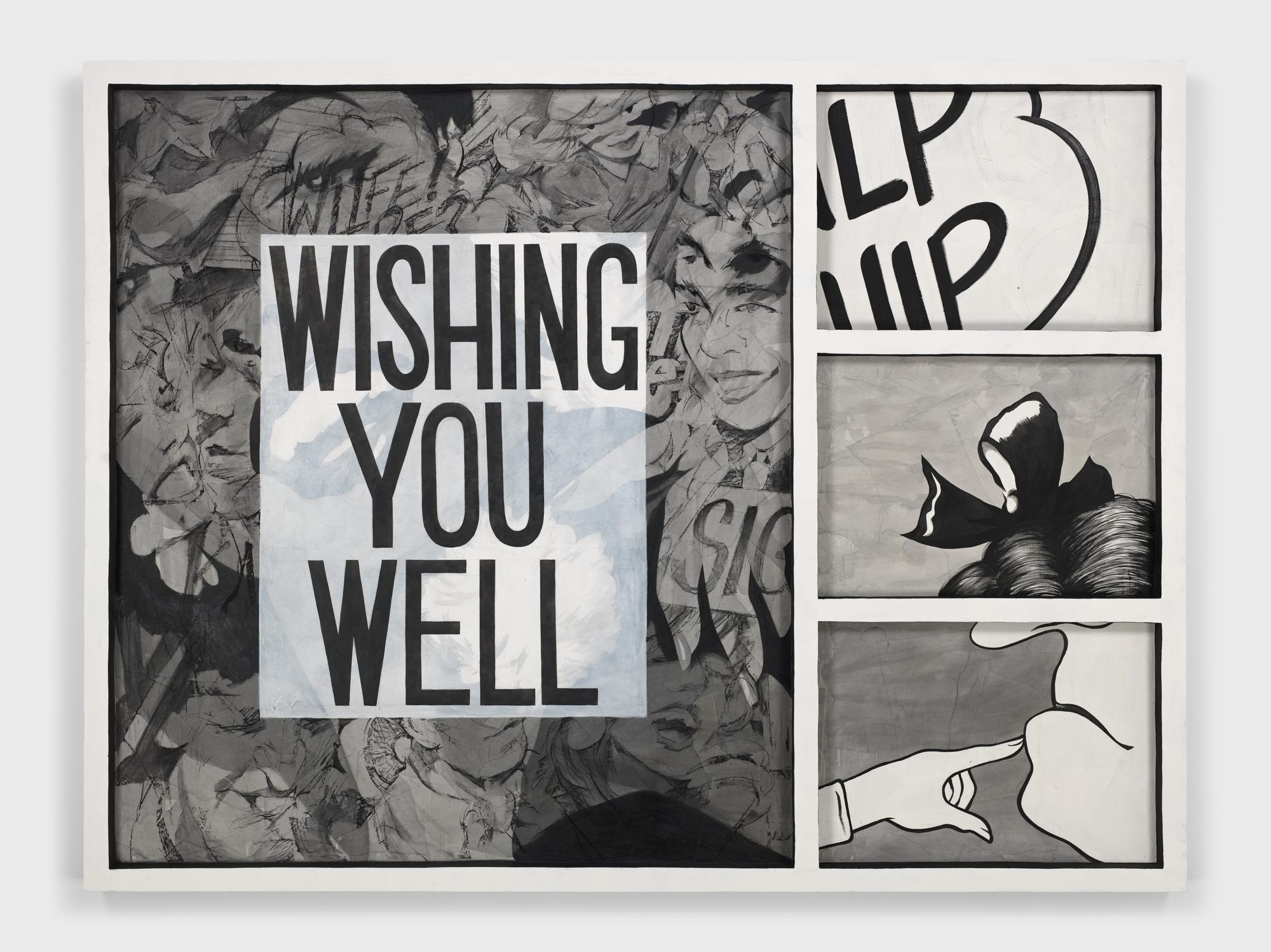
Gossiping, is female networking after all
Park’s energised images not only mirror the complexities of identity formation, but also reflect the overwhelming nature of our daily information consumption and the perpetual accessibility of internet culture. The interplay of text and images in this body of work follows the shortened attention spans, destabilised memories and constant flow of thoughts that characterise this sea of online information. By combining familiar images with charged words and vernacular expressions, Park treats her drawings as if they were film stills with subtitles, advertisements, news articles or Instagram posts. In doing so, she displays her attunement to the aesthetics of mass media and how its communicative function is inherently built on a relationship of trust; we are choosing to accept the meaning that is ascribed by the image to the text, and vice-versa. Further to this, by departing from the linear narrative so often prescribed by popular media, Park’s turbulent drawings encapsulate a system of spatial representation that is shaped by modern notions of discontinuity and diversity. In this world, the boundaries between the physical and virtual realms blur, and we are perpetually connected in time and space. Like the digital sphere, Park’s tumultuous mark-making transcends distance and collapses scale, thereby bringing her subjects within the power of the viewer.
This hallucinatory experience is heightened by Park’s incorporation of collage and cut-out techniques to create drawings that are part-sculptural relief. Her process of laying down flurries of charcoal and swathes of ink atop intricate layers of pasted-down rice paper works with and into the flatness of the picture, as much as the wrinkling of paper and its tonal transparencies also contribute to the creation of her multivalent drawings. Might we then see Park the ‘sculptor, not a painter’ who, like Robert Longo, builds up her drawings with layers of charcoal and dust and powder, but unlike Longo does not erase in order to reveal an image from a white surface but instead accumulates in order to assemble an image from a white surface. Such material and surface manipulations allow Park to shape and reshape her subject matter while giving her drawings a thickness that extends beyond the limits of the page. Physically occupying space with us, Park’s part-drawings engage us in a contemplative exploration of how mass media shapes and perpetuates cycles of idealisation and denigration in our collective consciousness.
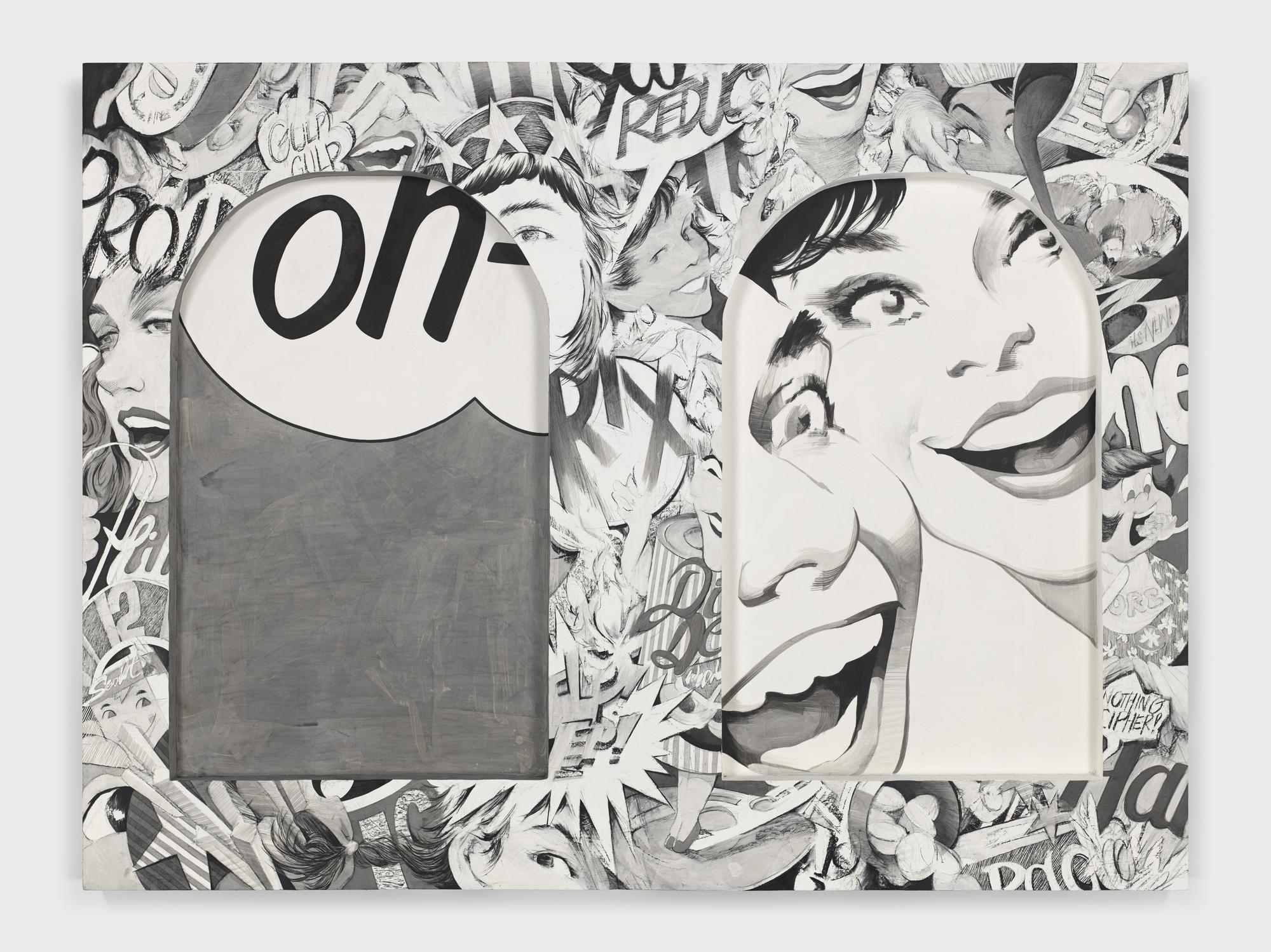
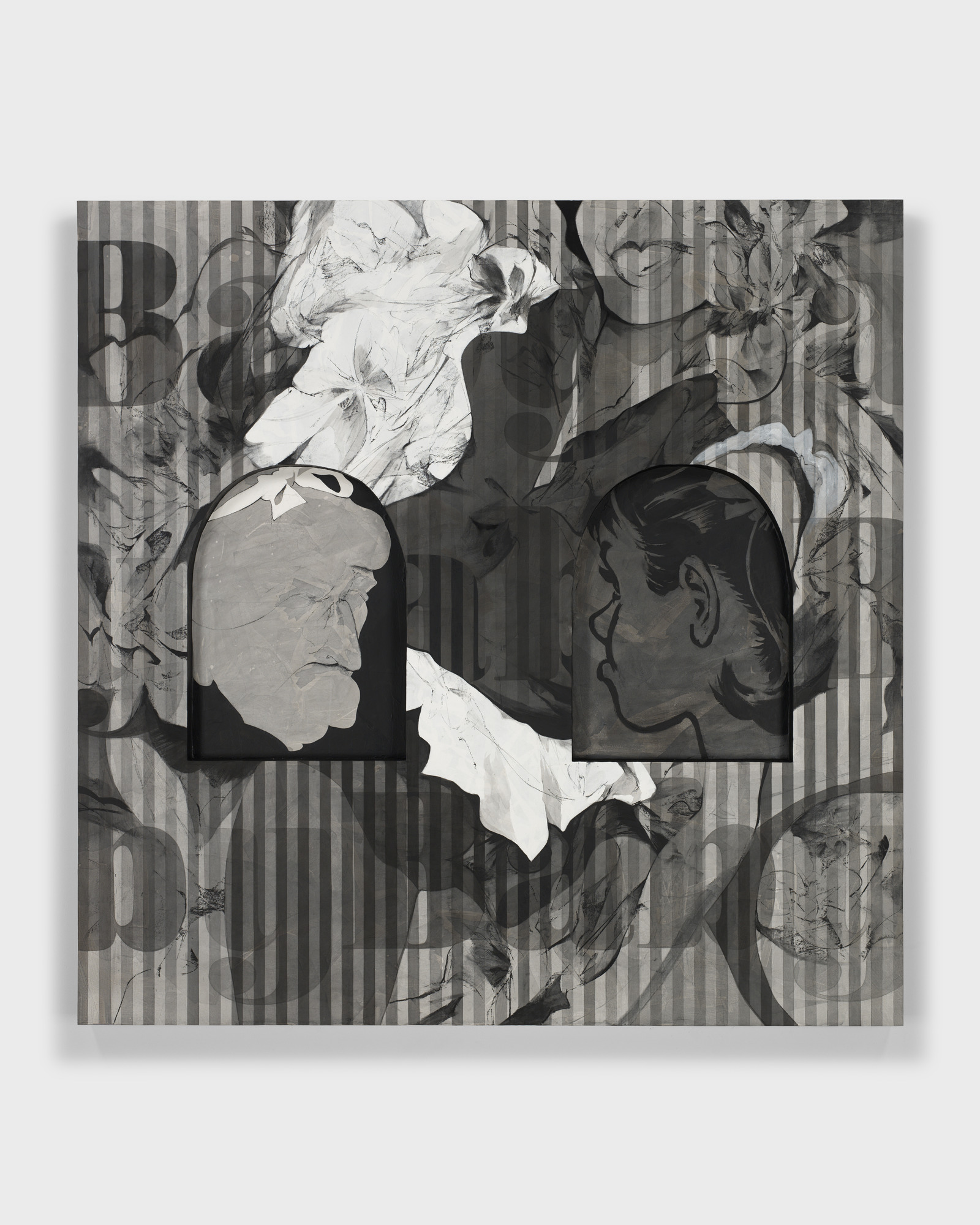
Disrupt, the dour certainties of pictures, property and power
In Laura Mulvey’s ‘seminal’ work Visual Pleasure and Narrative Cinema she applies psychoanalytic theory to dissect classical Hollywood cinema’s portrayal of sexual dynamics through a scopophilic (the love of looking) lens and its use of fetishism, spectatorship and identification. Mulvey contends that in classical Hollywood cinema women are coded as visual spectacles with the man positioned as the one who is looking:
In a world ordered by sexual imbalance, pleasure in looking has been split between active/male and passive/female. The determining male gaze projects its fantasy onto the female figure, which is styled accordingly. . . . [Women] can be said to connote to-be-looked-at-ness.[8]
At first sight, Park’s female figures are constructed to be accessible to the male gaze. But if her women are ‘to-be-looked-at’, they simultaneously demand that we Look, look. It is a reciprocal gaze in which both subject and viewer are objects of desire that give and receive pleasure.
In Last Words her face and décolletage is cut-out and isolated against a grey background such that her bedroom eyes and painted lips dominate the composition. This recurring image of a smiling woman who is both isolated and caught up in Park’s frenetic abstractions – or the vanitas woman in Finders Keepers who fondly gazes into her handheld mirror – play directly to the ‘leitmotif of erotic spectacle’.[9] While this hypervisualisation of the female figure might speak in a classical language by suspending these women within a fragmentary narration, Park voices the various entrapments, discontents, fears and anxieties that women have in their professional and personal lives. Her monumental black and white drawings have a generalised coherence while being composed of multiple ambiguous storylines and open endings. As such, the affective experience of viewing Park’s serialised works is both destabilising and reassuring for it mirrors the feeling of everyday life as mediated by the internet. We’re aware that our self-projections are splintered across time and geographies yet we find comfort in knowing that a community is watching out for us.
Park leans into this sense of pervasive voyeurism by using intimately cropped sections of male and female figures set against monochromatic backgrounds (Dangerous, Good Girl, What Could Have Been) to position the body in close proximity to the picture plane and ultimately direct the viewer’s gaze inwards to uncover their subconscious desires. The psychological depth of her characters is also enhanced by Park’s use of film noir inspired aesthetics, including sweeping movement and dramatic lighting, to create an emotionally charged atmosphere. In drawings such as Picture That the deep shadows and low vantage points heighten the visual impact of Park’s composition to suggest that an unequal power dynamic has come into play. In this instance that of a child seeking to ‘blend in’ with the throbbing crowd of idealised white bodies. One of Park’s more explicitly referential self-portraits refers to her experience growing up in a predominantly white Midwestern community in which she aspired to be ‘Blonde!’ By imagining her younger self as a wide-eyed cartoon character whose facial features are obscured, or quite literally whitewashed, Park expresses the pain of looking up to conventional beauty standards. Are Park’s female characters good, bad, dangerous, blonde? Through the fragmentation of her female subjects, Park takes pleasure in destabilising the power relations of male voyeurism and female empowerment within the context of neoliberal capitalism. In doing so, her work reinforces that the gaze is never exclusively gender-based. It is a complex way of looking that is shaped by various social forces, such as fame and money, and the interconnected formations of culture, race, class, and politics.
I hope I bother You and You think about me often.
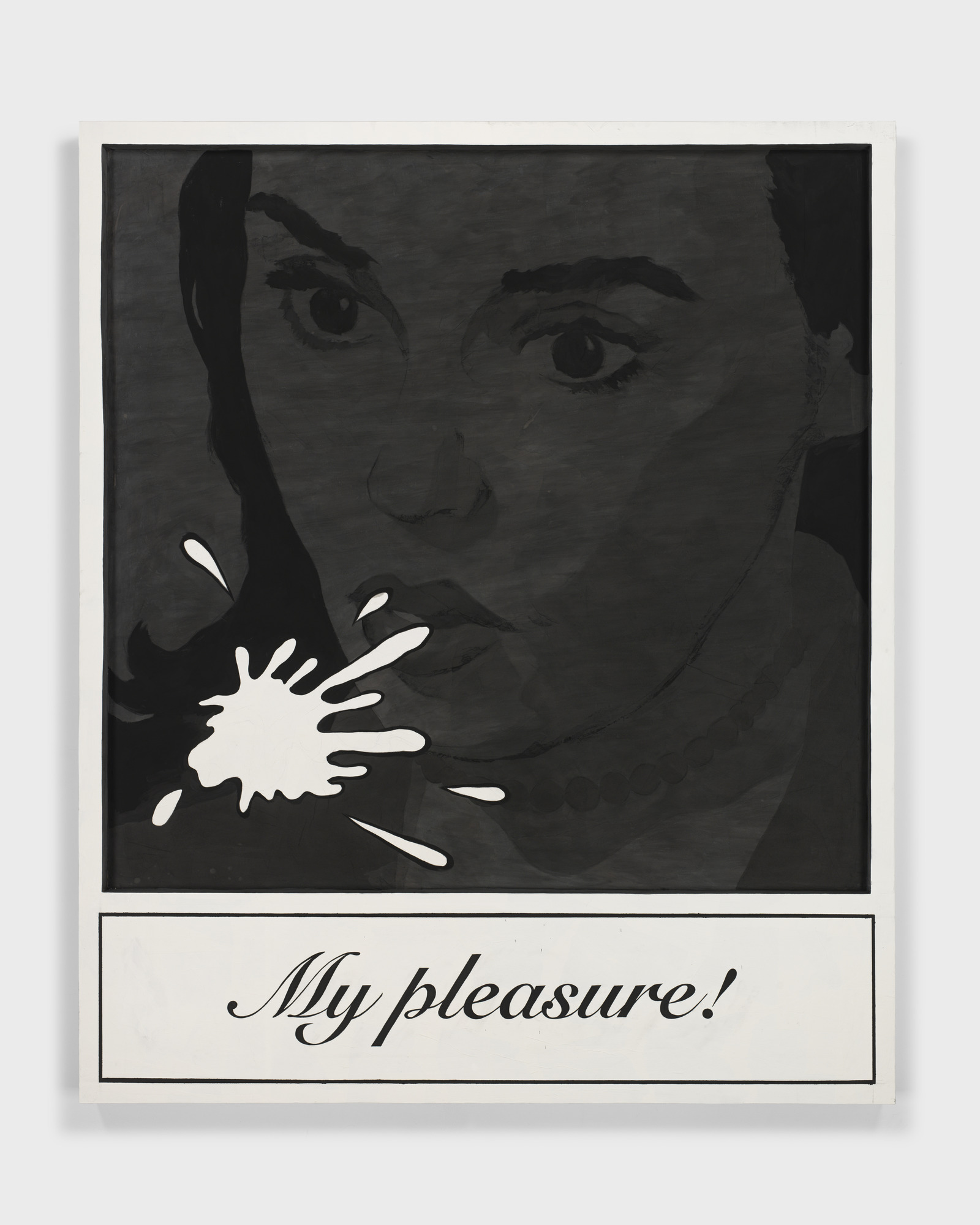
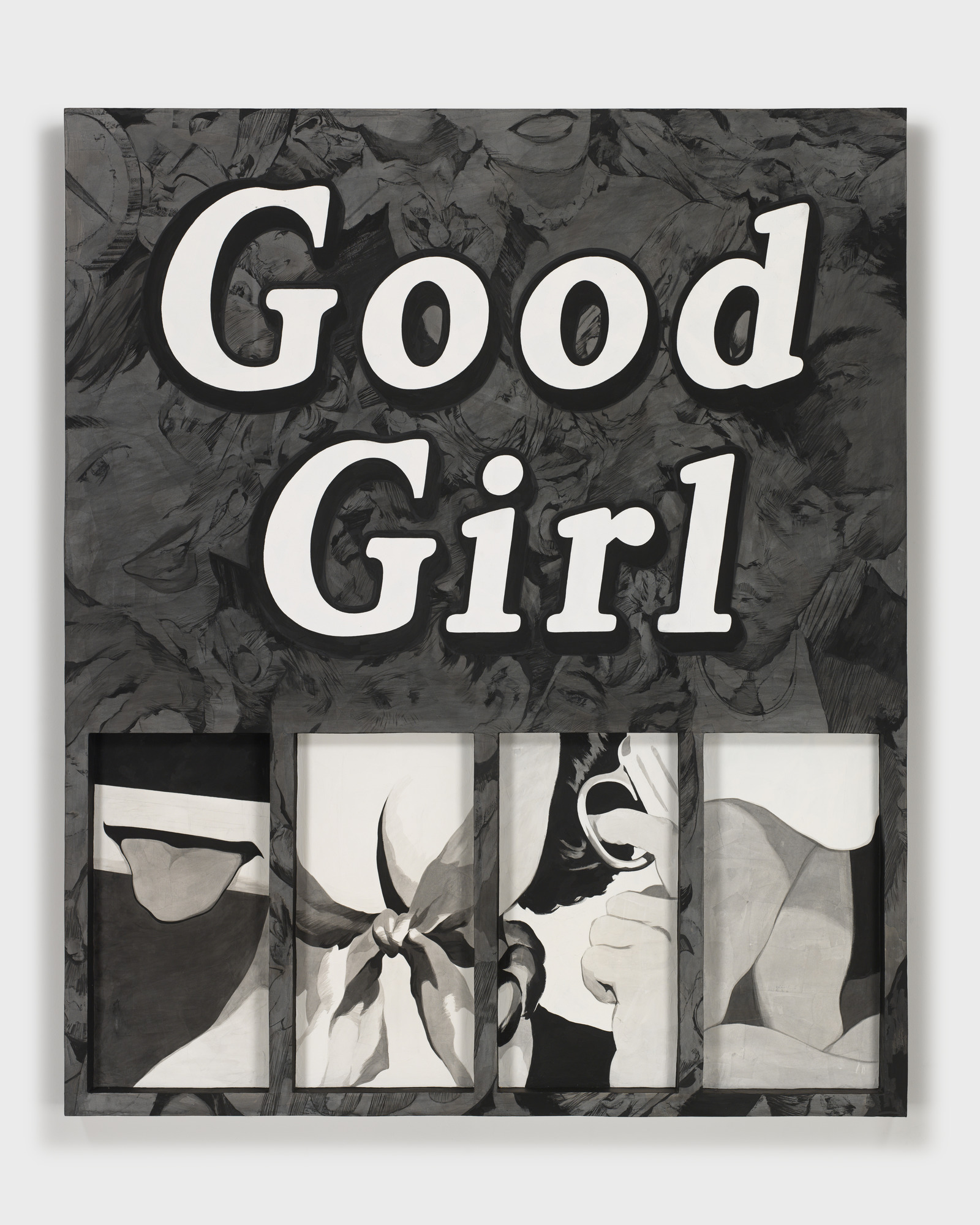
Customer, Service!
In our everyday life, we take, manipulate and customise our self-images in order to share ourselves with others. In this manner, photographs today become fragmentary ‘I-was-there’ and ‘I was-this-person-there’ claims whose function rests in asserting one’s image-presence rather than representing the world.[10] While there is no photographic imagery in Park’s drawings, a similar logic is invoked as her subjects are graphically enlarged, reduced, cropped, transposed and recombined towards their audiences. By employing the language of photography in this mode, Park shows that drawing can also be a cumulative medium, one in which successive observations elaborate upon the ones that have come before; and above all, a recognition that the interplay of text-image can yield compelling mystery rather than banal objectivity. This ability to evoke ambiguity rather than ‘mere’ objectivity is what connects her montages of mid-century imagery to this present moment – a drawing by Park is a precisely framed fragment of boundless potential and simultaneously a composite whole unto itself.[11]
In the catalogue text accompanying the 1977 exhibition Pictures, Douglas Crimp stated that:
The caption is only one of many expressions of a desire that treats the image with the mechanistic devotion appropriate to a fetish. The obsessive manipulations, alterations, applications of words are the materialization of a reverie. But because desire comes about only in the sphere of frustration, the image remains forever at a distance. Frustration operates here not in relation to the subject of the picture, but in relation to the absence of signification. It is not because this is a particular woman, but because this is no particular woman, that the picture becomes a fetish.[12]
Though Park’s drawings are not wordless; we must see both image-and-text. We scan the crowd for speech balloons; thought bubbles; captions that are free floating, contained in boxes or superimposed; expressive typefaces; and onomatopoeia sound effects, so that we might potentially understand how Park’s drawings are signalling systems that satirically transform the problem of female desire into a source of pleasure.
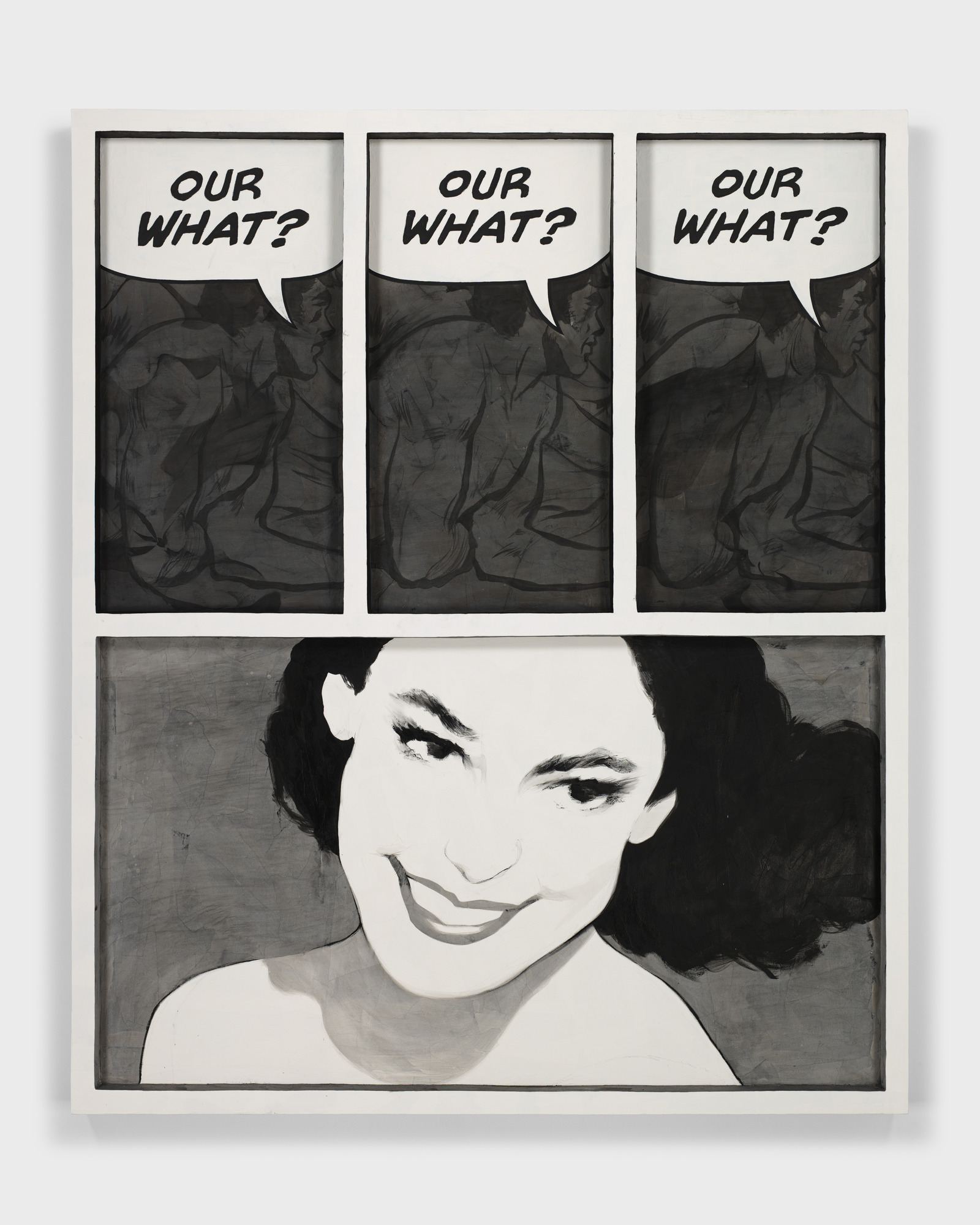
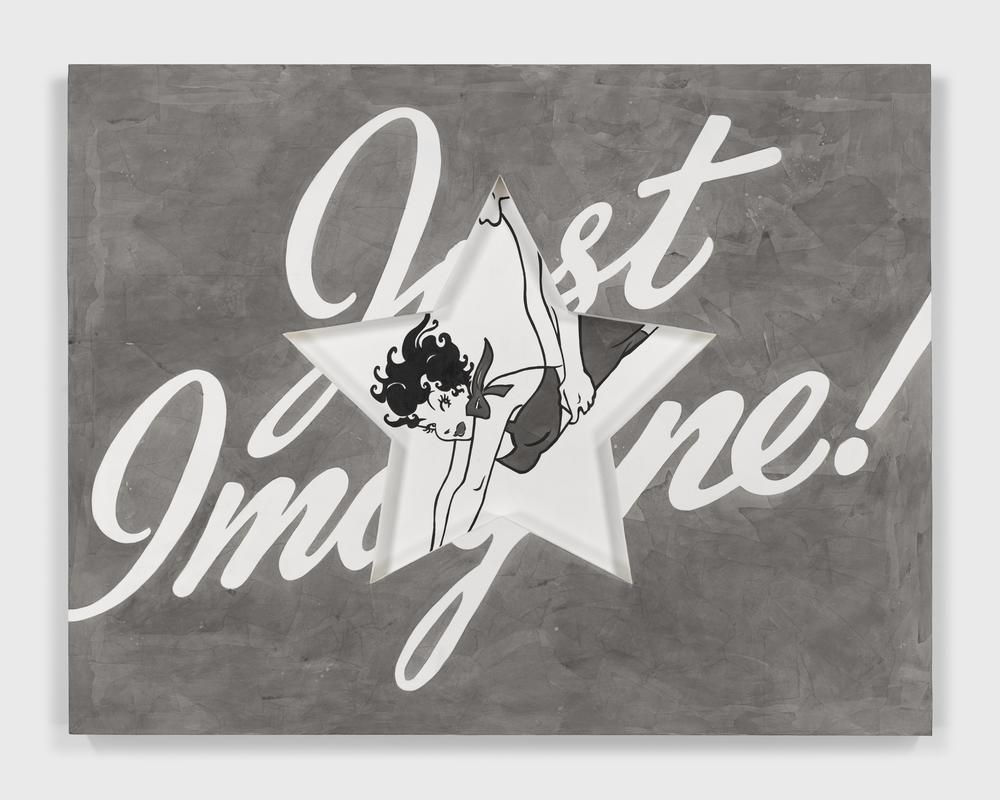
I want, to be on the side of pleasure and laughter!
Throughout Park’s oeuvre she has consistently employed self-directed humour as an antidote to the perpetual visibility and alienated self-awareness of our times. The ironic detachment characteristic of her work and the millennial generation is made powerfully evident through her textual incursions. In drawings such as Thank You, Good Girl, Just Imagine and Wishing You Well, common phrases which at first glance might read as social pleasantries are transformed by Park’s female characters into back-handed compliments. Pithy remarks are given with ingracious eyes and sarcastic smiles. This fetishisation is achieved by super-imposing or physically embedding broken text – a technique regularly employed by comic book writers and artists to evoke specific emotions or emphasise particular story elements – into her drawings to create comedic juxtapositions. This line of humour can be quirky, absurd, or even macabre, and is critical to unlocking the layers of narrative complexity within her work.
Andrea Long Chu in her book Females argues for the subject of ‘female’ as neither born nor becoming, but an experience ‘defined by self-negation’ that includes ‘any psychic operation in which the self is sacrificed to make room for the desires of another’.[13] Everyone is symbolically female because our desires for an another come to us without our consent. The female figures in Park’s drawings are all girls looking for/negotiating who they want to be. Each one of them as much an influencer as they are a follower. Take for example, My Pleasure!, which depicts a framed portrait of a woman’s face beneath which Park has captioned a courteous phrase commonly associated with customer service interactions: ‘Oh, it’s my pleasure!’ Yet in Park’s hands this polite expression of gratitude adopts a Young-Girl posturing as it mimics the ‘toxic positivity’ or ‘pseudo-sincerity’ of contemporary relationships and inter-personal exchanges. Might the face of the beautiful young woman in My Pleasure! no less sincerely anticipate the cum shot as she would a glass of spilt milk. If you cum on my face will it bring me joy? Perhaps only if it were to get in my eyes and the tears start rolling down my face so that I’m left with mascara under my eyes all night which no one tells me about. After all, there’s no use crying over spilled milk. Like the artists in the Pictures generation, such as Robert Longo, Cindy Sherman and Barbara Kruger, Park has turned to the ‘available images in the culture around them’, and like them has subverted ‘the standard signifying function of those pictures, tied to their captions, their commentaries, their narrative sequences – tied, that is, to the illusion that they are directly transparent to a signified’.[14]
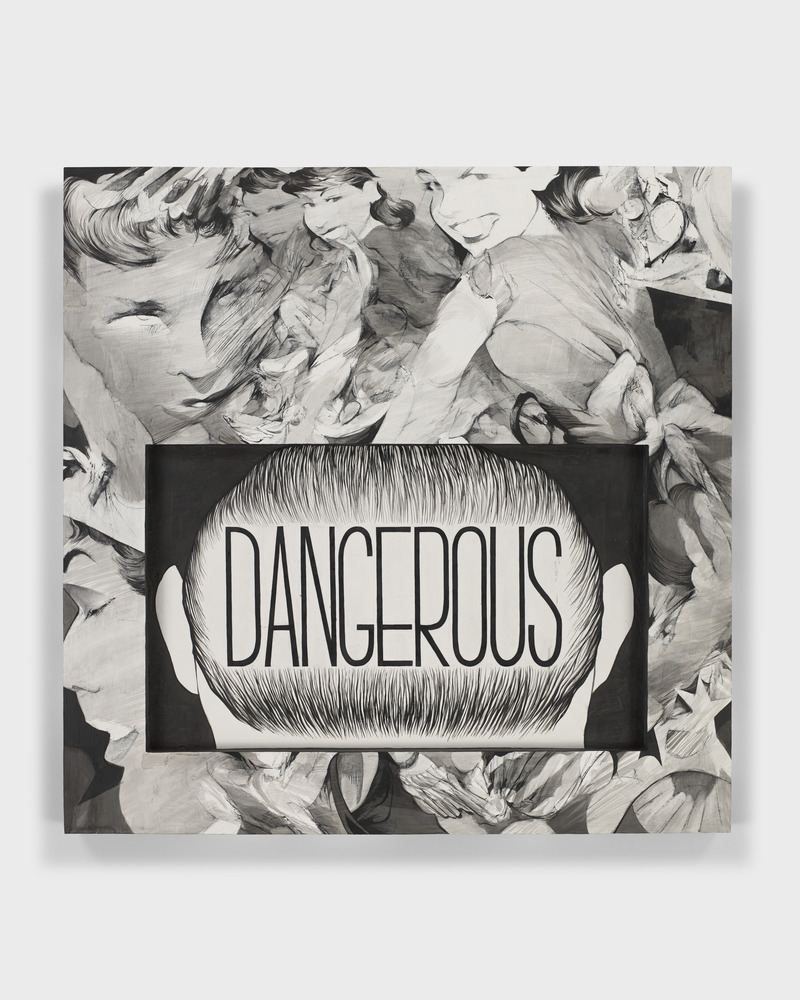
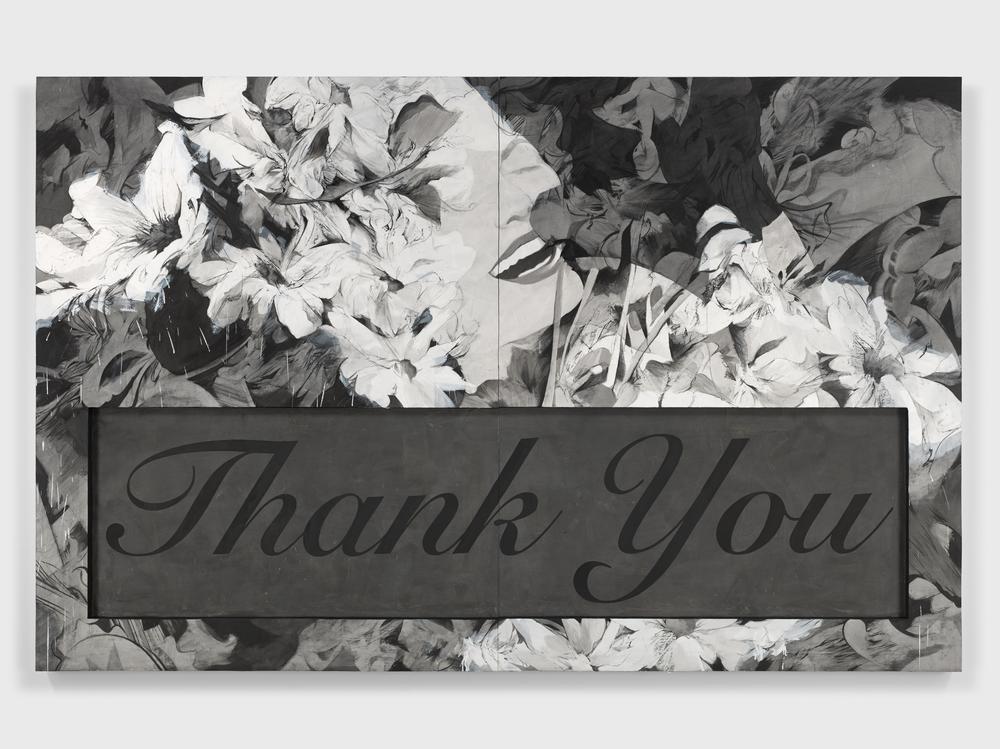
These are my confessions
Drawing-and-writing; both are confessional mark-making mediums, which in their immediacy are capable of revealing the artist at their most intimate.
Images-and-text; both are symbolic abstractions, which enable an individual to open their own fictive window into reality.
Many of Park’s works feature arched and rectangular windows that provide a glimpse into another world. The effect of this framing device produces a magnification akin to looking through a peephole in which the profile of a nose, the outline of a protruding chin, a precocious tongue or coquettish bow, become hypervisible and accordingly fetishised. Either way, it’s hardly a flattering point of view for the subjects of our looking. Perhaps the effect is closer to overhearing your co-workers gossiping in the corridors or a conversation that is happening ‘behind closed doors’. In doing so, might Park, after Barbara Kruger, ,construct a way of looking which welcomes the presence of pleasure and escapes the deceptions of desire’.[15] After all, Kruger saw her work ‘as a series of attempts to ruin certain representations and to welcome a female spectator into the audience of men’.[16] Park’s drawings are not a critique of men or women. More so, they are a critique of the expectations surrounding ideal femininity or masculinity and how these are imposed onto women. Might the female characters in her work inhabit an inferior position willingly, ironically, erotically? Such positions are further complicated by Park use of written text to create pleasurable generative uncertainties. For as writer Alex Quicho proposes, ‘In the post-platform economy, it is not just a question of wanting to be a girl as ironic posture or fun reality. The fact of the matter is that everyone has to be a girl online’.[17] From angel to bimbo, virgin to vamp, Park’s human and possibly not human characters represent a multitude of critical female perspectives that illuminate the interconnectedness of human desires, emotions and fantasies within contemporary society.
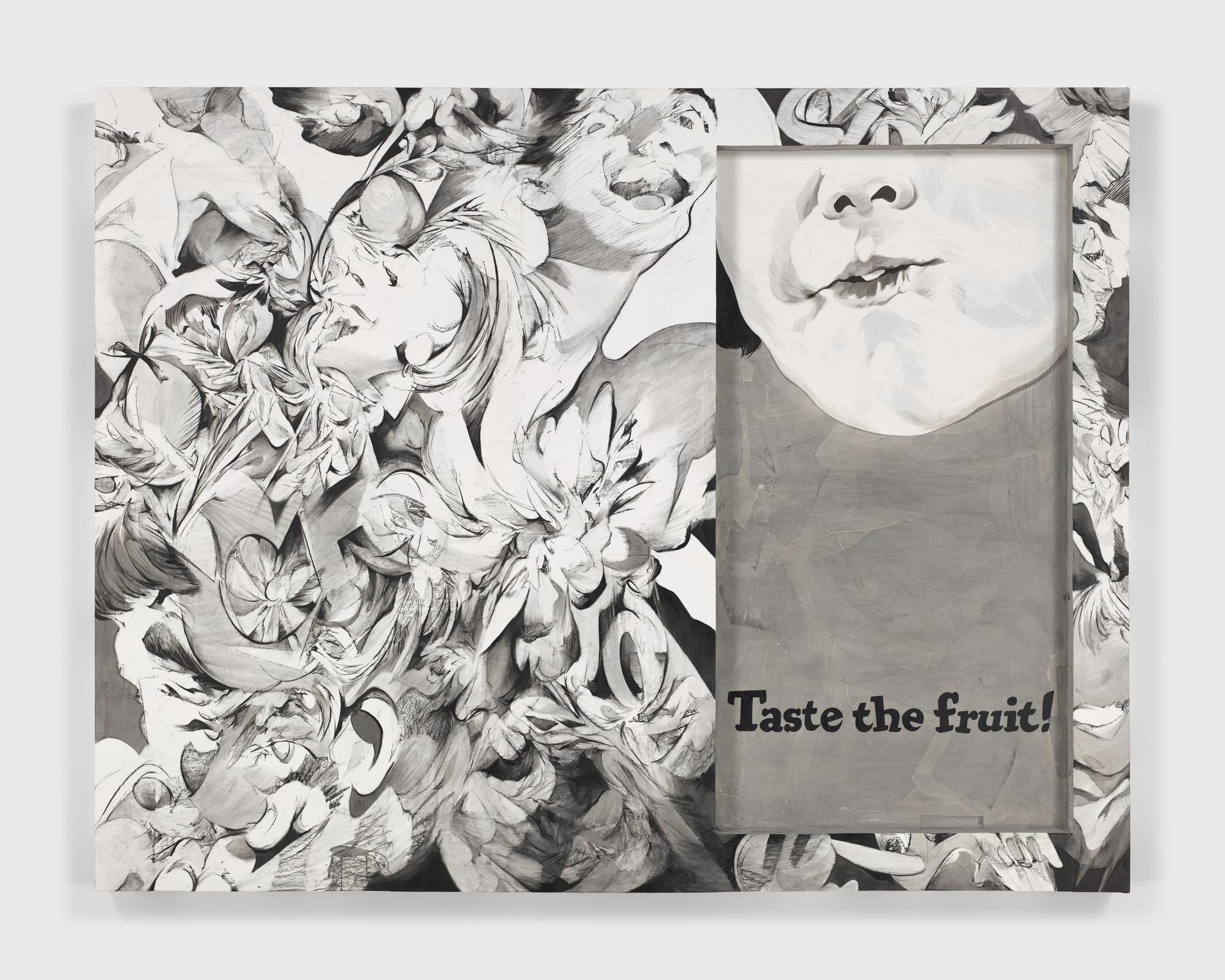
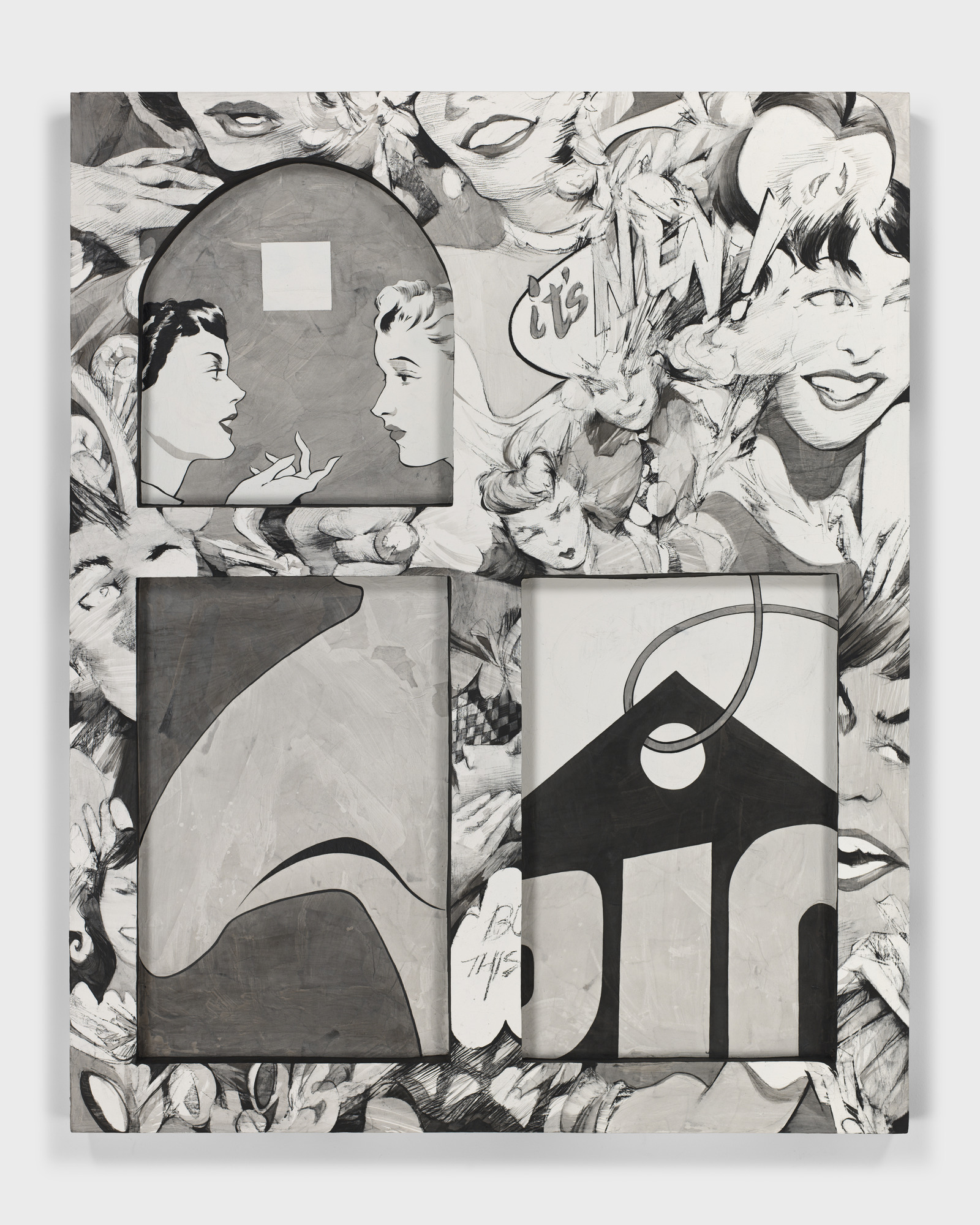
Does it bring me joy?
Looking is the first and most common form of social intercourse. In Park’s drawings our eyes are brought to rest on conventional close-ups of a women’s face, legs or cleavage. Such flattened bodily fragments or erotic insertions might easily quench our voyeuristic tendencies and satisfy our moral superiorities (we want these women but are not these women). However, by removing any markers of social identity and erasing the surrounding context of her characters, Park ensures that we cannot judge or identify them; in her works every female is Park, myself and yourself. It might then be said that Park’s drawings are also those ‘secret pictures’ which Walter Benjamin said ‘are able to shock the associative mechanism to a standstill’.[18] For repetition is always repetition with a difference, and there is always new work to be done.
Caught in a cycle of perpetual renewal, the lexicon of Americana which appears in Park’s work still signifies today what it is to be female. We are all aware that these images of women are false but we choose to believe in them anyway. In this way, the questions raised by Cindy Sherman’s 69 Untitled Film Stills, 1977 – 1980, still resonate with our present moment and are given new meaning by Park. In this series of black and white photographs each female guise adopted by Sherman elicits an unmistakable twinge of recognition. However, what we have recognised in this work is not a particular actress in a specific film but an idealised female identity. So, in a manner similar to Sherman, Park also abstracts this generalised identity from various images of women to survey the fictions of femininity prevalent in American, and by extension, Western culture. In doing so, Park as Sherman, looks back to understand the present, with Park projecting herself into each figure to mirror the pervasive sense of female inadequacy present in society’s representation and consumption of women.
But it is not all bad. This past decade has been a time of generative and creative contradiction as advertising, film and television have all come to recognise a diversity of female experiences and bodies, while at the same time the ‘ideal female’ still wields its affective power as we remain preoccupied with appearance. If such female figures continue to return it is because everything is a kind of text and so as Jacques Derrida said in 1967 ‘there is no outside-text’, nothing but their endless circulation and re-circulation. The images-and-texts in Park’s drawings have lodged themselves in our minds but in their fragmentation and in their framing the artist does provide a limit, a cut away, a window, a quilting point and a way out. And so what does it mean if Park demands that we look? Women are used to such scrutiny after all. Is it okay for me to say that, Daddy?
- In Lee Lozano’s General Strike Piece, begun in 1969, she decided to drop out of the art world.
- Adapted from a description by Helen Molesworth of Bataille’s Story of the Eye in relation to the polymorphous sexuality that is present in the work of Lee Lozano. See Helen Molesworth, “Tune in, Turn On, Drop Out: The Rejection of Lee Lozano,” LOZANO C. 1962 (New York: Karma, 2016).
- “1st wk August, 71 decide to boycott women. Throw Lucy Lippard’s 2nd letter on defunct pile, unanswered. Do not greet Rochelle Bass in store.” Lee Lozano, No title, 1971. Following a subcommittee meeting of women involved in the Art Workers Coalition at Lucy Lippard’s loft of women in 1971, Lozano decided to cease engaging with women.
- Tiqqun, Preliminary Materials For a Theory of the Young-Girl, trans. Ariana Reines (Los Angeles: Semiotext(e), 2012).
- Samuel Adams Green quoted in Bradford R. Collins, Pop Art (London: Phaidon Press, 2012), 8.
- Peter Galassi, Walker Evans and Company (New York: The Museum of Modern Art, 2000), 25.
- Collins, Pop Art, 12.
- Laura Mulvey, “Visual Pleasure and Narrative Cinema,” Screen 16, no.3 (Autumn 1975): 11.
- Ibid.
- Felix Hoffmann and Kathrin Schönegg, “On Sending and Sharing,” Send Me an Image: From Postcards to Social Media, eds. Hoffmann and Schönegg (Berlin: C/O Berlin and Steidl, 2021), 19.
- Galassi, Walker Evans and Company, 47.
- Douglas Crimp, “Pictures,” X-TRA 8, no. 1 (Fall 2005): 25. This essay was originally printed in the catalogue which accompanied the exhibition Pictures at Artists Space in New York, 24 September – 29 October, 1977. The exhibition was organised by art critic Douglas Crimp. The show included the work of Troy Brauntuch, Jack Goldstein, Sherrie Levine, Robert Longo and Philip Smith. This exhibition spurred a loose affiliation of artists collectively known as the Picture Generation. Notably, Cindy Sherman was not presented in the original exhibition but Crimp included her in an updated version of his essay that was published in the 1979 issue of October.
- Andrea Long Chu, Females (London: Verso, 2019), 11.
- Crimp, “Pictures,”20.
- Barbara Kruger, “Incorrect,” in Remote Control: Power, Cultures, and the World of Appearances (Cambridge: MIT Press, 1994), 220.
- Kruger, Remote Control, 220.
- Alex Quicho, “Everyone Is a Girl Online,” Wired, September 11, 2023, https://www.wired.com/story/girls-online-culture/.
- Walter Benjamin, “A Short History of Photography,” Screen 13, no. 1 (Spring 1972): 25.









